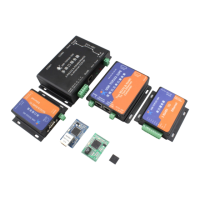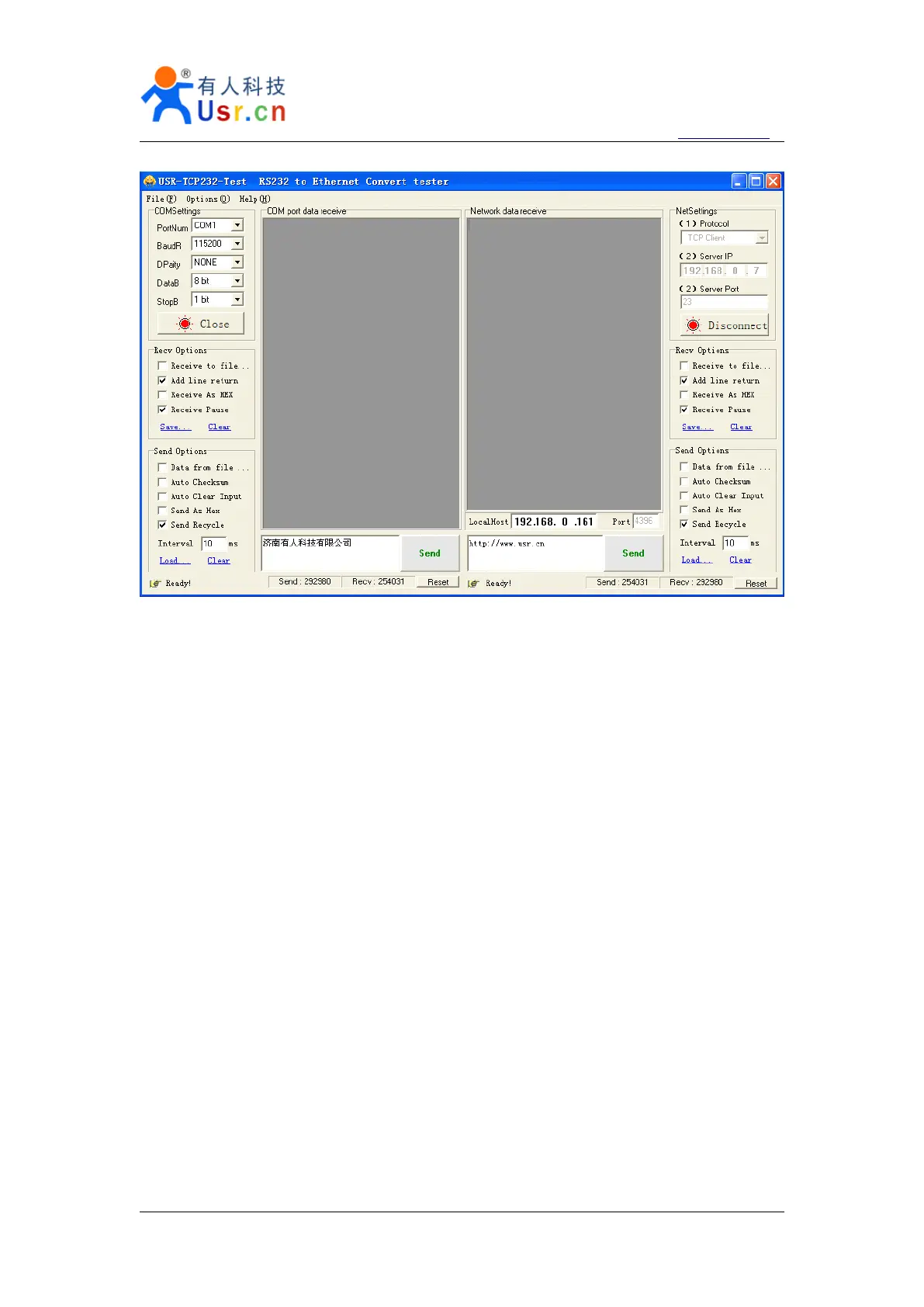Multifunctional serial to Ethernet module user manual http://en.usr.cn
Jinan USR IOT Technology Co., Ltd tec@usr.cn
Page 47 /
/
/
/ 9
Diagram 6 - 5 default working mode communication
Specially
Specially
Specially
Specially instruction:
instruction:
instruction:
instruction:
For the robustness of your application system, we suggest you using the time out function
(default 0, closed). Such as setting the Telnet Time out, to prevent the complicated internet
circumstances influencing communication stability, and solving the off lineelink,communication
feign death, TCP connection to be occupied problems.
In the TCP Server mode, if still have no new data transceiver when it is time out set t ing time,
the module will be active to switch off the client links, release resources, wait for new links,
transmit t ing or receiving data will clear the time.
In the TCP Client mode, if still have no new data transceiver when it is time out set t ing time,
the module will be active to switch off the server links and try to relink.
6.4.
6.4.
6.4.
6.4. Common
Common
Common
Common questions
questions
questions
questions
6.4.1.
6.4.1.
6.4.1.
6.4.1. Work
Work
Work
Work across
across
across
across network
network
network
network segment
segment
segment
segment
If your TCP232 device
’
s IP is 192.168.0.7, and remote PC
’
s IP is 192.168.1.7, we need to
config.

